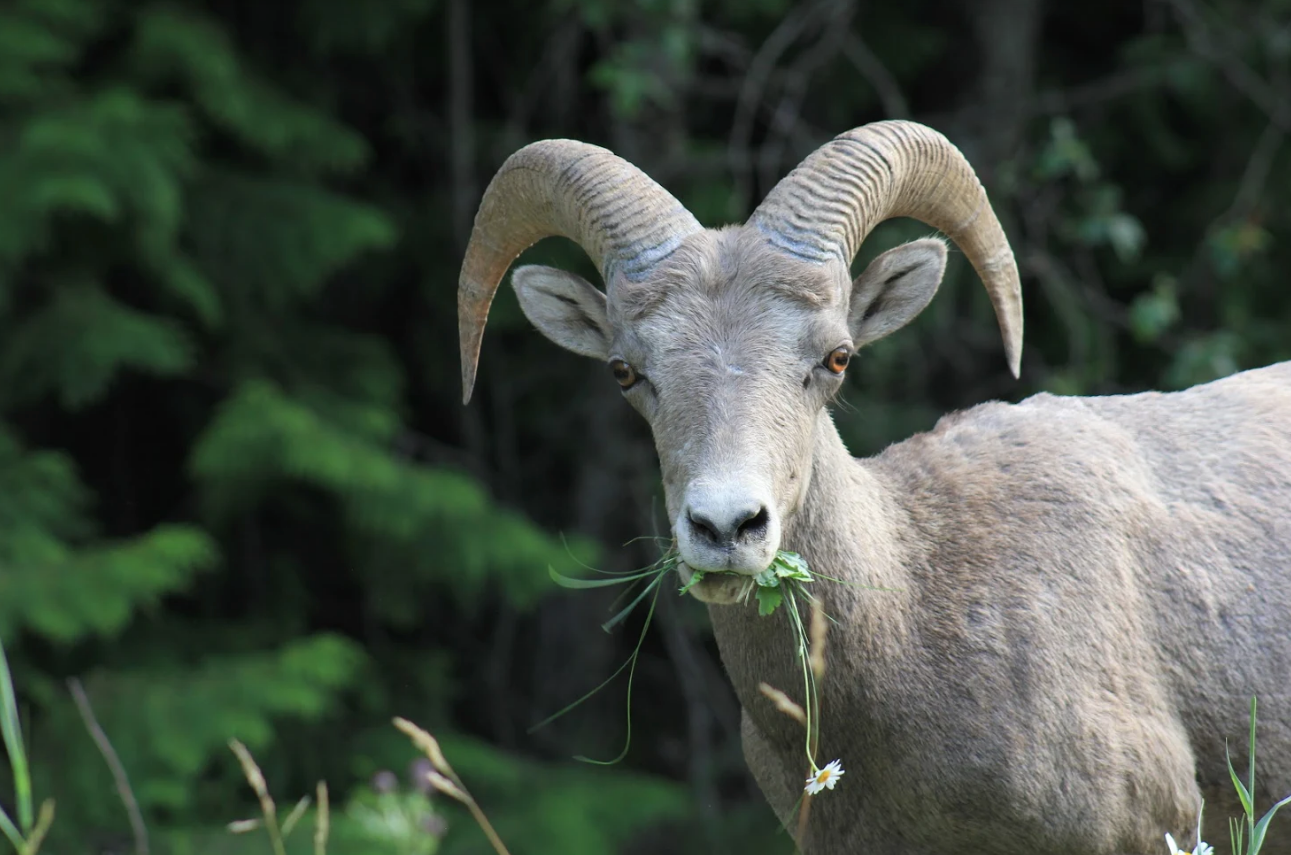Conservation of mountain ungulates in Canada
Editor's note: The following article by University of Sherbrooke Professor of Biology Marco Festa-Bianchet originally appears in the ACC's 2018 State of the Mountains Report.
By underlining the importance of artificial and natural selection in mountain ungulate populations, Dr. Festa-Bianchet's research examines how we can best use our knowledge of evolutionary biology for the conservation of these iconic species.
Dr. Festa-Bianchet was Chair of the Committee on the Status of Endangered Wildlife in Canada from 2002-2006.
This article first appeared in the ACC's 2018 State of the Mountains Report. We'll continue to publish articles exploring the science of the current state of Canada's alpine on our blog throughout the year. Find them all here.
Bighorn sheep lamb.
Canada's original climbers
There are three species of mountain ungulates in Canada: bighorn sheep (Ovis canadensis), thinhorn sheep (Ovis dalli) and mountain goats (Oreamnos americanus). Thinhorn sheep include two subspecies. One, the Dall's sheep, is pure-white and found in an arc from extreme northwestern BC through northern Yukon and into the Northwest territories. The other, Stone's sheep, is much darker and mostly found in northern BC. There is a gradient in coloration in the mountain of central Yukon. Bighorn sheep are found in the Rocky Mountains of Alberta and BC, and in mountain ranges in south-central BC. Mountain goats are found in most mountains in western Canada.
Population size and factors affecting numbers
All three species occupy most of their historic range in Canada. Local extirpation has occurred in central BC for bighorn sheep and in the extreme southern part of the distribution of mountain goats in both BC and Alberta. There have been a few reintroductions of both bighorn sheep and mountain goats in Canada, and Canadian population have been the source of many introductions and reintroduction in the USA, in particular for the 'interior' ecotype of bighorn sheep. All three species are hunted in most of their distribution outside protected areas, and in some areas they are an important source of food and ceremonial items for First Nations.
Mountain goats.
Threat of disease
The greatest threat facing bighorn sheep is pneumonia, likely caused by Mycoplasma ovipneumoniae and transmitted by domestic livestock, particularly sheep but also goats and possibly cattle. Mortality can be over 80% and all-age die-offs are typically followed by many years of very poor lamb survival as lambs are infected by surviving adults.
In Canada, there has been limited grazing of domestic sheep within bighorn sheep ranges. The main exception to this is central BC, where contact with domestic sheep remains an ongoing concern, despite many successful efforts by governments and local organizations to prevent it. Use of goats as pack animals is a concern for disease.
Thinhorn sheep do not have a history of die-offs but are highly susceptible to pneumonia. Any attempt to keep domestic sheep within thinhorn sheep range should be seen as a major threat to the species. Wild sheep will closely inspect domestic sheep, increasing the chance of contagion. Because rams of both species can roam over very large areas and sometimes away from their traditional ranges, the establishment of wide buffer zones where domestic sheep cannot be kept is essential for the conservation of mountain sheep. Mountain goats do not appear as susceptible to exotic diseases, perhaps because they are less likely to come into close contact with livestock.
Habitat loss and fragmentation
Another threat is habitat loss and fragmentation, particularly by the construction of barriers such as reservoirs, major roads, fences and other human developments that prevent demographic and genetic exchange among herds. This is an important issue because many mountain ungulates exist in small populations that would be vulnerable to inbreeding without the genetic exchange provided by roaming males that will travel tens of kilometres searching for breeding opportunities. Habitat loss is also possibly linked to climate change, particularly with the encroachment of forest on alpine tundra and other open grassy areas used by mountain sheep and mountain goats to forage. Prescribed fires are a widely used and very effective tool to counter this threat.
A young bighorn sheep ram, likely around three years old.
Sport hunting of mountain ungulates
All three species are subject to sport hunting. Mountain goats cannot tolerate a harvest greater than about 2%, possibly because of their late age of primiparity and the difficulty of distinguishing the sexes in the field. Harvests can include 30-60% of females. Better hunter training programs can decrease the proportion of females in the harvest. Hunting of mountain goats in Alberta and most of BC is based on quotas and is generally sustainable. Very few mountain goats are harvested in the territories.
Mountain sheep are managed as trophy species, and harvest in most of their distribution is based on regulations that set a minimum degree of horn curl for a 'legal' ram, with no quota for provincial or territorial residents. There are quotas for nonresident hunters, who pay outfitters upwards of $30,000 for a sheep hunt.
The unlimited number of permits issued to resident hunters leads to an artificial selective pressure against rams with rapidly growing horns. Genetically-based declines in horn size have been demonstrated for one intensively studied population in Alberta. Declines in ram horn size consistent with artificial evolution of small horns through intense trophy hunting have been reported in the scientific literature for bighorn sheep in Alberta and central BC, and for heavily-hunted Stone's sheep in northern BC. These undesirable consequence of selective hunting can be remedied by lowering the harvest pressure and shortening the hunting season, allowing rams from unselected populations in National Parks to move into hunted areas for the rut and swamp the selective effect of the hunt.
Currently, hunting seasons lasting until late October allow hunters to kill an unknown proportion of rams that exit the National Parks looking for breeding opportunities.



